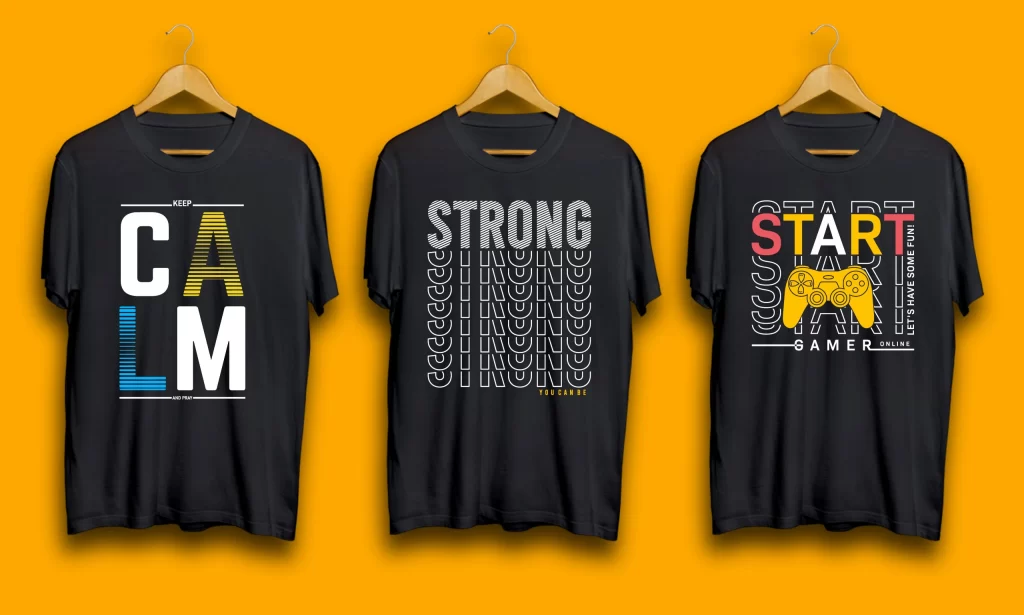T-Shirt Design
Creating T-shirt designs is a popular form of graphic design that allows for artistic expression and can be a fun way to share your creativity or promote a brand or message.
Understand Your Audience and Purpose:
- Determine the target audience for your T-shirt design and the purpose behind it. Is it for personal use, a specific event, a business, or a cause?
Conceptualize Your Design:
- Start by brainstorming ideas for your design. Think about the message or theme you want to convey. Sketch out your concepts on paper to get a visual sense of your ideas.
Typography:
- Choose appropriate fonts and text layout for any text elements in your design. Ensure that the text is legible and complements the overall design.
Color Selection:
- Pick a color palette that aligns with the design’s theme and mood. Keep in mind that some colors may look different when printed on fabric compared to what you see on a computer screen.
Artwork and Graphics:
- Incorporate artwork, illustrations, or graphics that relate to your design concept. These elements can add depth and visual interest to your T-shirt.
Placement:
- Decide where on the T-shirt you want your design to be placed. Common options include the center, front or back, pocket area, or sleeve.
Size and Scale:
- Ensure your design is appropriately sized for the T-shirt. It should be visible and balanced. Consider how the design will look on various T-shirt sizes.
Detail and Simplicity:
- Balance detail with simplicity. T-shirts often have limited space, so keep your design clear and not too intricate. A simple, bold design can be quite effective.
Mockup and Test:
- Create mockups of your T-shirt design to see how it will look in real life. You can use T-shirt mockup templates available online or print a prototype to test the design.
Consider Printing Method:
- Different printing methods, such as screen printing, heat transfer, or direct-to-garment (DTG) printing, have their own requirements. Be aware of the limitations and capabilities of your chosen method.
Legal Considerations:
- Ensure that your design does not infringe on copyright or trademarked materials. If you’re designing for a business or organization, secure the rights to use any logos or branding elements.
Vector Format:
- If you’re working with digital artwork, create your design in a vector format (e.g., Adobe Illustrator) to ensure scalability and flexibility.
Feedback and Revisions:
- Get feedback from peers, friends, or potential customers. Be open to making revisions based on their suggestions.
Print and Production:
- When you’re satisfied with your design, prepare the artwork for printing. Consider working with a professional T-shirt printing service to ensure the best quality results.
Quality Control:
- Inspect the printed T-shirts to ensure they match your design’s colors, size, and placement. Quality control is crucial to delivering a product that meets your standards.
Distribution and Marketing:
- If your T-shirt designs are for sale, plan how you will market and distribute them. Consider using online marketplaces, social media, or setting up a website.
Remember that T-shirt design is not just about creativity but also practicality. Make sure your design is visually appealing and wearable for your target audience.

